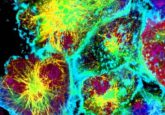Unique clinical implications of HIV-related lymphoma
Since the introduction of combination antiretroviral therapy (cART) almost two decades ago, a number of changes have taken place in the spectrum of cancer affecting HIV-infected individuals. Although the incidence and proportion of deaths related to non-AIDS-defining malignancies, mostly infection-related cancers, are increasing, lymphoma is still a major complication of HIV-infection and is the most frequent neoplastic cause of death among HIV-infected individuals [1,2]. A decline in the incidence of lymphoma has been observed in the cART era, along with a concomitant increase in CD4 counts and a decrease of HIV RNA at lymphoma diagnosis. In general, the incidence of non-Hodgkin lymphoma (NHL) initially declined but has eventually stabilized. Nevertheless, the changes in the incidence of AIDS-related lymphoma (ARL) have been heterogeneous among the different lymphoma types. Cases of diffuse large B-cell lymphoma (DLBCL), especially primary CNS lymphoma, have decreased, while the proportion of Burkitt’s lymphoma (BL) cases have increased [3–5]. The incidence of Hodgkin’s lymphoma (HL) has remained stable and even increased in some cohorts [6,7]. This heterogeneity could be explained by the fact that the use of cART has decreased the proportion of HIV-infected individuals with low CD4 counts and, as a consequence, lymphomas that typically presented in severe immunosuppressed patients have diminished as well. This is the case of primary effusion lymphomas, plasmablastic lymphomas and primary CNS lymphoma, all having a higher incidence among patients with severe immunosuppression and poor HIV control. On the other hand, cART would act by increasing CD4 counts thereby facilitating the development of lymphomas with favorable biology and more likely to be cured, such as BL and HL [8].
Click here to view full article.





